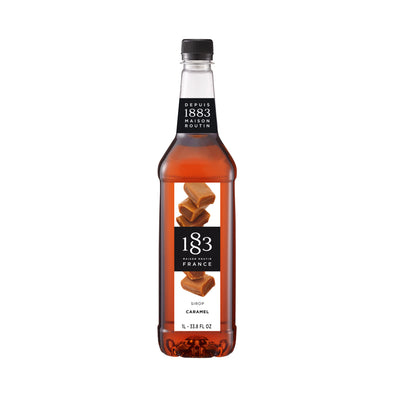South East Asian Coffee
Coffee is the world’s second most traded commodity after oil and it’s grown all over the globe, from South America to Africa to Asia.
You’ll find that the countries that produce coffee have something in common. They’re all located in the Tropics. That’s the belt running between the tropics of Cancer and Capricorn.
It can be a little difficult to get your head around where your daily dose of coffee might have come from when you buy from your local speciality coffee shop or for that matter make an online bean purchase or two… time to delve into things and go on a journey of coffee discovery as we explore one of the top coffee producing regions in the World – Asia and particularly South East Asia.
SOUTH EAST ASIAN COFFEE
In 2019 it’s estimated that 169.34 million bags (60kg) which equates to 10.2 million tonnes of coffee were produced worldwide.
South East Asia accounts for 2.31 million tonnes, with Vietnam and Indonesia being in the top 10 regions for coffee production worldwide.
CAMBODIA
Cambodia’s coffee cultivation dates back to the 1700’s during the French colonial period and is fast becoming a significant coffee growing region.
The coffee from Cambodia is predominantly Robusta coffee. Cambodia has many waterfalls and high elevations which makes it an ideally suited environment for growing coffee.

(Image by @madsouris on Unsplash: https://unsplash.com/photos/uOXDyttG1So)
INDONESIA
Indonesia accounts for 660,000 metric tonnes of the worlds coffee production. It is made up of thousands of islands, which is why the coffee available from this part of the globe is so diverse. It has to be said, Indonesian coffees are high up on pretty much everyone’s coffee top 10 with Javan, Sumatran and Sulawesi high on the list. These are coffees that really deliver often with earthy undertones providing complex smoky and spicy flavours and a full body with a rich aroma.
Their coffee cultivation dates back to the late 1600’s during the Dutch colonial period and now have several major coffee producing regions.
JAVA
The island of Java was the first place where coffee was cultivated in Indonesia. Java coffee is famous for its matured woody and earthy flavours with rich, full body and sweet acidity.
Try Farrer’s Old Brown Java coffee today.
SUMATRA
The Aceh Gayo region of Indonesia is renowned for growing Arabica coffee. Coffee plantations in this region covers around 95000 hectares and lie on an altitude of 1300 – 1600 above sea level. The combination of climate and volcanic soil in this region gives the coffee its distinct characteristics, strong body and complex flavours and aromas.
The Gayo highlands which run along the Sumatera Island is part of the Bukit Barisan Mountain range or “Ring of Fire” and is one of the largest arabica coffee producing regions in Indonesia. It’s considered to be one of the most premium coffee beans in the world.
Try Farrer’s Sumatra Mandheling coffee.

(Image by @marcst84 on Unsplash: https://unsplash.com/photos/LU1dhnTY8ZU)
LAOS
Another producer of coffee in Asia is Laos (or Lao People’s Democratic Republic). Producing 28,500 metric tonnes of robusta coffee which is equates to 0.2% of the worlds coffee.
Laos’s coffee cultivation dates back to the 1920s by the French who recognised the high elevations and fertile soils as a prime coffee growing area.
The majority of Laotian Robusta coffee is produced in the Bolaven Plateau an elevated region in the Champasak Province in the south of the country with altitudes of of 1300 metres above sea level. Laos also grows Arabica varieties of coffee which are known for their medium body and a combination of mild citrus and floral tones.
MALAYSIA
Coffee has been grown in Malaysia since the early 19th Century, they now produce 120,000 metric tonnes of coffee annually, predominantly in the provinces of Kelantan, Kedah, Trengganu, Sellangore and Malacca. Coffee is also cultivated in the Sabah region at the northernmost tip of the island of Borneo.
Malaysia grows both Arabica and Robusta coffee however, this only accounts for about 5% for its production. The majority of coffee grown is Liberica, a lesser known variety of coffee which a much larger cherry compared to Arabica plants.
It’s said to have a floral and fruity aroma, but when made into coffee, has a full-bodied, woody taste. Liberica accounts for less than 2% of the commercially produced coffee worldwide.

(Image by @paan_azam13 on Unsplash: https://unsplash.com/photos/Sr9oVMRGV70)
PAPUA NEW GUINEA
Sitting along Indonesia’s ‘Ring of Fire’, coffees from Papua New Guinea (PNG) benefit greatly from volcanic soils and tropical climates to produce some of the finest coffee in the world.
The first coffee plants were recorded in PNG in the 1800s, but commercial production didn’t take off until the 1920s. Today, PNG produces around 54,000 metric tonnes of coffee annually which equates to about 1% of the global coffee production.
The majority Papua New Guinea’s coffee plants are Jamaican Blue Mountain, a variety of Arabica bean and are small holder and estate grown at high altitudes. Estate grown coffees (graded A, X, C and PB) are washed and fermented for 24 hours before being sun dried. This process gives the coffee a clean, mild flavour with balanced acidity.
Sigri is one of the more famous estate coffees and is grown in the Sigri Plantation, situated in the Wahgi Valley, in the Western Highlands Province. The farm was established in the 1950s which was one of the first farms that started with the professional cultivation of coffee. Today the farm has 122ha and is internationally recognised for producing one of the finest coffees in the world.
Why not try Farrer’s Papua New Guinea Sigri coffee today?
THAILAND
Thailand has grown coffee for a little over a century, but only started exporting coffee in 1976. It now produces 36,000 metric tonnes of coffee annually and grows both Arabica and Robusta. Arabica beans are commonly grown in the Chiang Mai province in northern Thailand, and Robusta is grown in southern parts of Thailand.
A notable coffee from Thailand is Thai Peaberry.
Peaberry is a rare coffee bean formed when two beans fuse into one. They make up less than 5% of a coffee harvest and have to be hand selected by growers. The uniquely large Thai Peaberry bean creates a cup bursting with flavour and personality, which offers an experience to delight any coffee lover.
Grown in the cool mountains of North Thailand in the Chang Rai Provence, Thai Peaberry produces a uniquely flavourful cup with hint of caramel and subtle tones of orange, plum and strawberry.
Order Farrer’s Thai Peaberry Single Origin Coffee today!
VIETNAM
Coffee was first introduced to Vietnam by the French in 19th Century and is now is one of the world’s most competitive Robusta producers and the second highest producing coffee country in the world producing 1,650,000 metric tonnes of coffee. Coffee is the second most exported commodity next to rice.
A large portion of coffee consumed in Vietnam is instant and exports fast amounts of instant coffee to the UK market.
Both Arabica and Robusta are grown in Vietnam but Robusta accounts for 97% of total production. The majority of coffee is grown in the Lam Dong province of the Central Highlands. The terrain in the area is known as ‘Bazan Red land’ (red basalt soil) and offers the perfect conditions for growing coffee. This rich volcanic mountain soil and high elevations allows the sweetness of the coffee cherry to develop.
EXPLORE THE FARRER’S COFFEE RANGE
Explore our full range of coffee including Single Origin, Blends, Fair Trade and Decaffeinated coffees in our online shop here.





